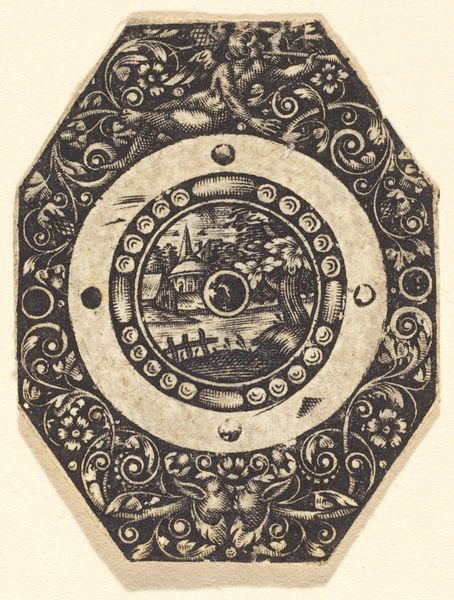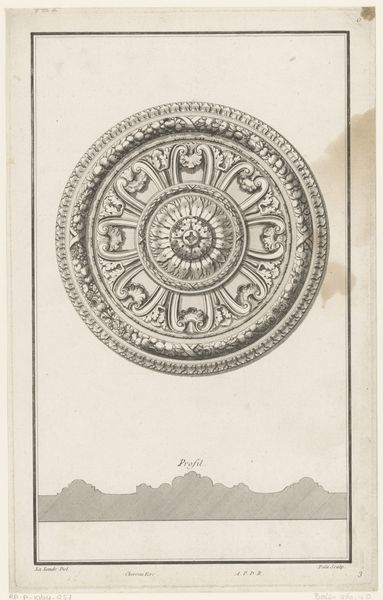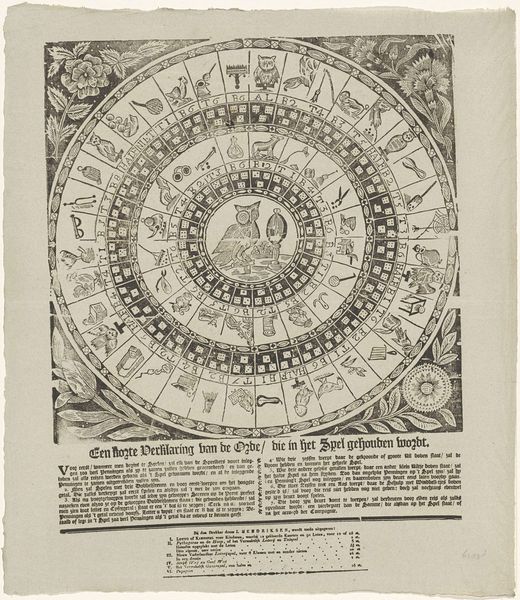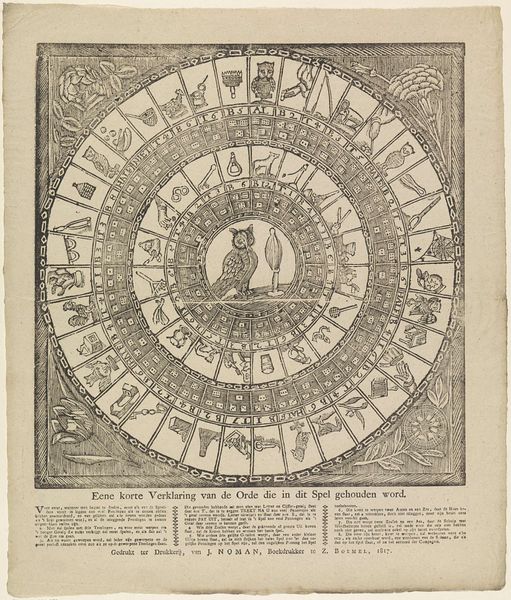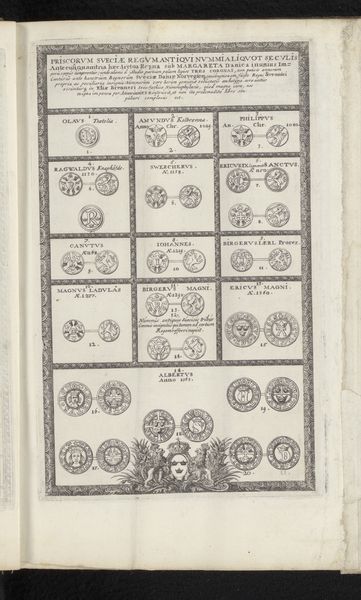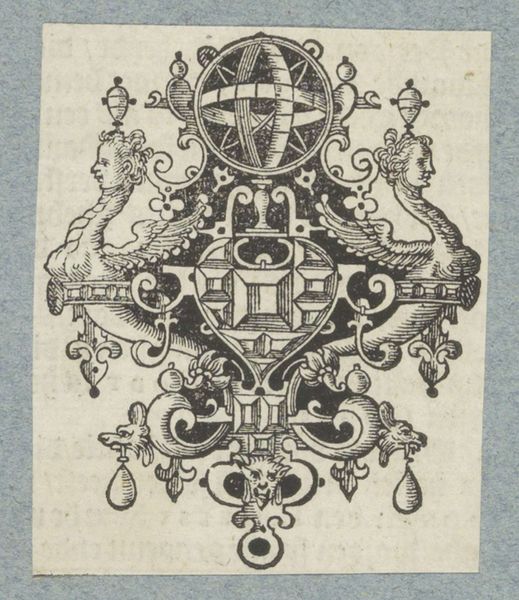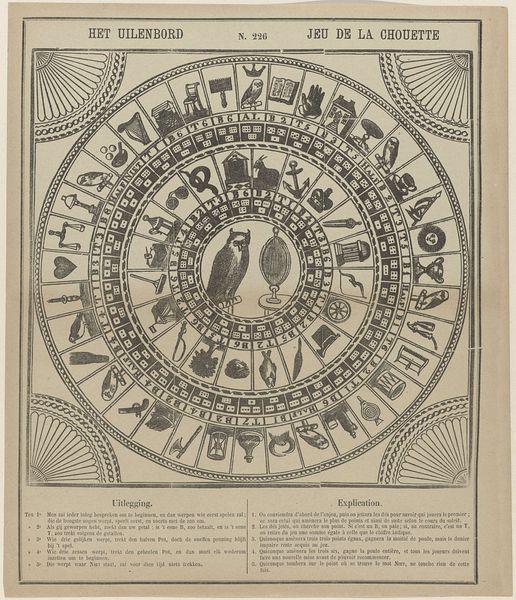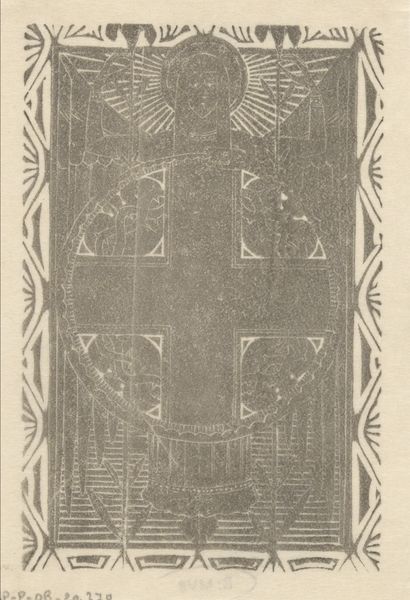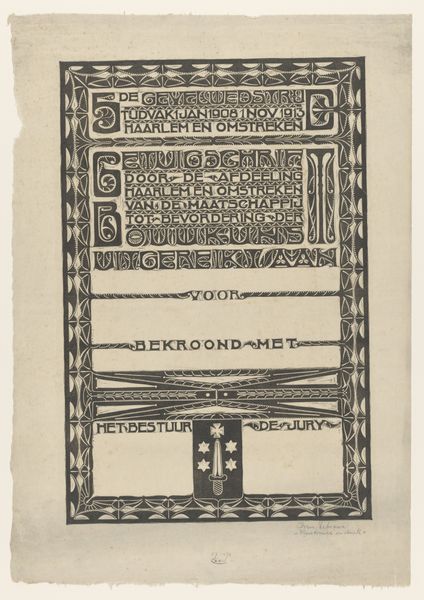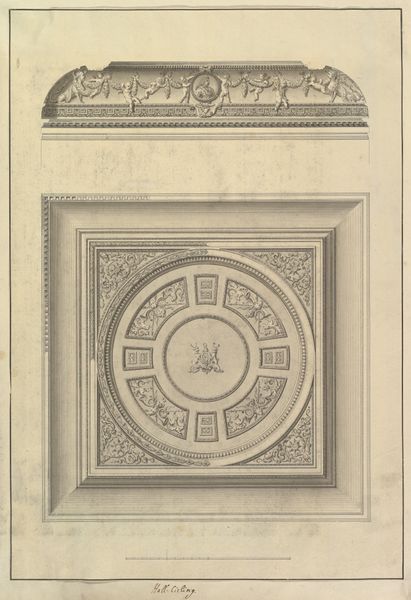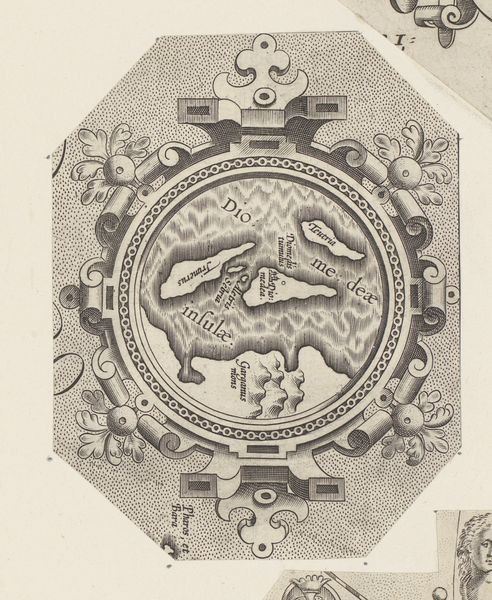
graphic-art, print, woodcut
#
graphic-art
#
type repetition
#
rippled sketch texture
#
art-nouveau
#
shading to add clarity
# print
#
old engraving style
#
geometric
#
woodcut
#
embossed
#
limited contrast and shading
#
pen work
#
decorative-art
#
coloring book page
#
dotted shading
#
columned text
Dimensions: height 144 mm, width 112 mm
Copyright: Rijks Museum: Open Domain
Editor: This is Mathieu Lauweriks's "Omslag kalender 1896," made in 1895 using woodcut and other graphic arts techniques. It feels very ornate and a little bit mystical to me, with all the zodiac signs. How do you interpret this work? Curator: What strikes me is how this calendar cover embodies the anxieties and aspirations of the late 19th century, a time of rapid industrialization and social change. Lauweriks, deeply involved in architectural theory and design reform, intertwines geometric abstraction with zodiacal symbolism. Consider how the "art nouveau" style itself was a reaction to industrial production, seeking a return to craft and a connection with nature, which it expresses through stylized forms. Editor: So it’s more than just a pretty calendar? Curator: Precisely! Notice how the geometric structure mirrors the order and precision valued in architecture and the sciences, while the zodiac signs connect us to ancient beliefs and the cosmos. Lauweriks seeks to harmonize these seemingly disparate elements. The inclusion of the phrase "Architectura et Amicitia" – Architecture and Friendship – elevates the idea of design to a realm of collaboration, communication and societal harmony, presenting design as the antidote to the chaos brought on by modernity. Editor: That's fascinating. I didn't think about it as a social statement. Curator: And what of the material itself: a woodcut print, allowing for mass production while retaining an element of hand-craftsmanship? It is these intersections between nature and technology that reveal a wider conversation surrounding social values. Now, does that shift how you feel about the artwork? Editor: Absolutely. I see now it is a layered artwork deeply entrenched with a particular worldview. Thanks! Curator: My pleasure. Looking closely reveals so much!
Comments
No comments
Be the first to comment and join the conversation on the ultimate creative platform.
